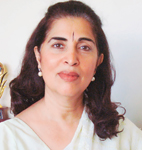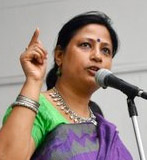
Rekha Dhondiyal
Senior Teacher, Study Hall School
STUDY HALL’S TRIBUTE TO NIRBHAY
She went to a mall to see a film like you and me.
On her way back home in a private bus,
Six ruffians defiled her, betraying her trust.
One by one, they molested and beat her.
Each one of them was worse than a cur.
There was no option but to bear the atrocity.
Her friend fought for her in the infamous city.
But the criminals were without scruples, remorseless.
They kicked her, injured her badly and tore her dress.
They threw them out of the bus, onto the pavement.
They lay there hurt and bruised, twisted and bent.
Help! Help!! They cried, almost yelped.
Folks passed by, scared, didn’t render help.
They remained there, half-dead in a state of undress
A pair of naked bodies, they looked such a mess!
A kind soul appeared out of the blue.
Said to himself,” Something I must do”.
Got a sheet and gave them dignity and their due.
From their sad state, he took a cue.
He took them to a nearby hospital.
The girl is critical, the doctors announced.
The boy recovered but she, back to life, couldn’t bounce.
She struggled for weeks; the will to live was strong.
The hospital stay was very painful and long.
She turned serious and was taken to Singapore.
She had now become like India’s folklore.
There, she unfortunately breathed her last.
In India flags were at half mast.
Called Nirbhay, she was hailed as a brave-heart.
Valiantly and beautifully, she had played her part.
In her death, we have found a cause to fight for.
No girl will ever face rape, blood or gore.
A young life snuffed out in the prime of her life.
Fight back, we will, never mind the pain and strife.
 DONATE
DONATE






 Volunteer
Volunteer
 Work With Us
Work With Us
